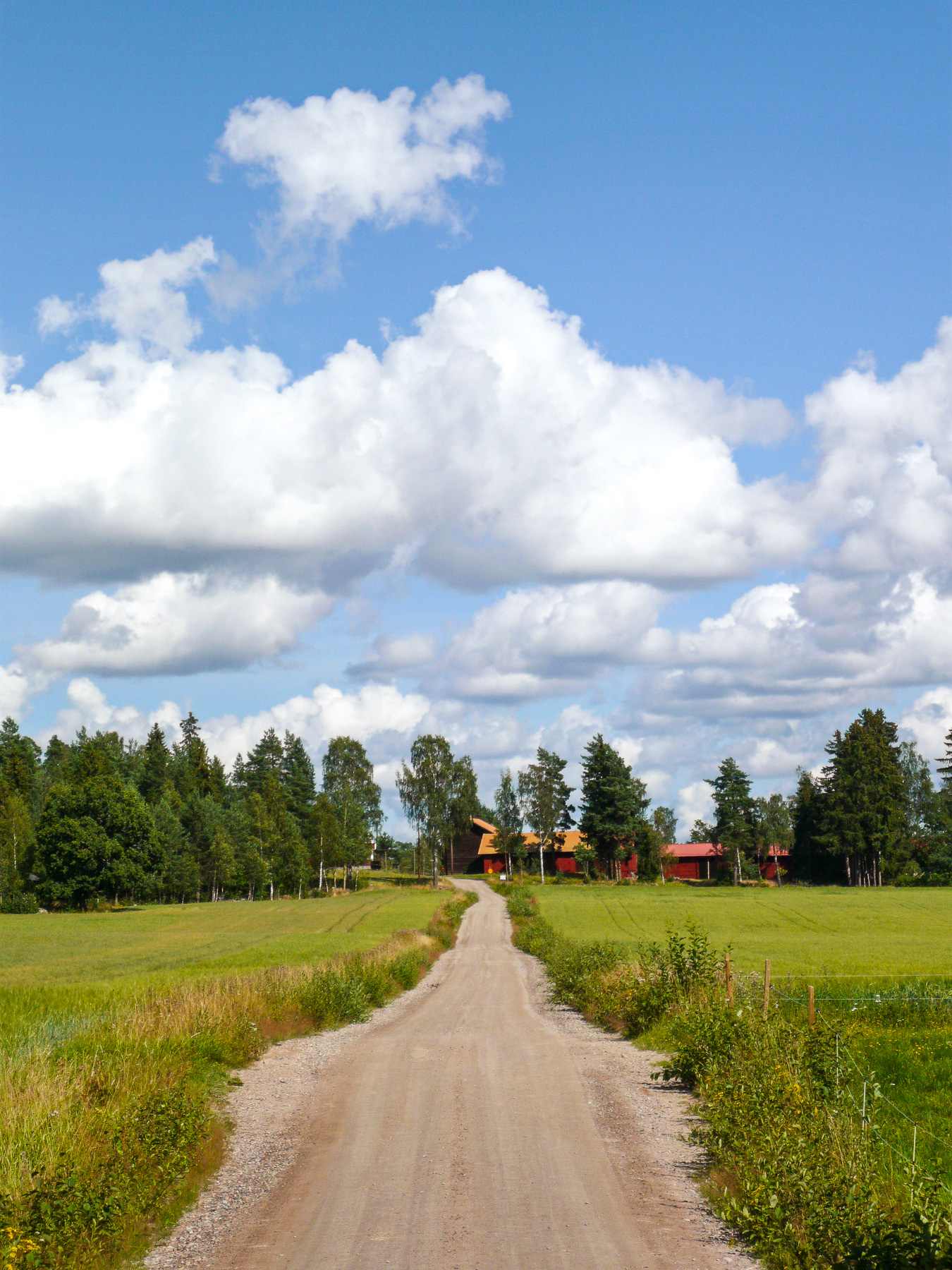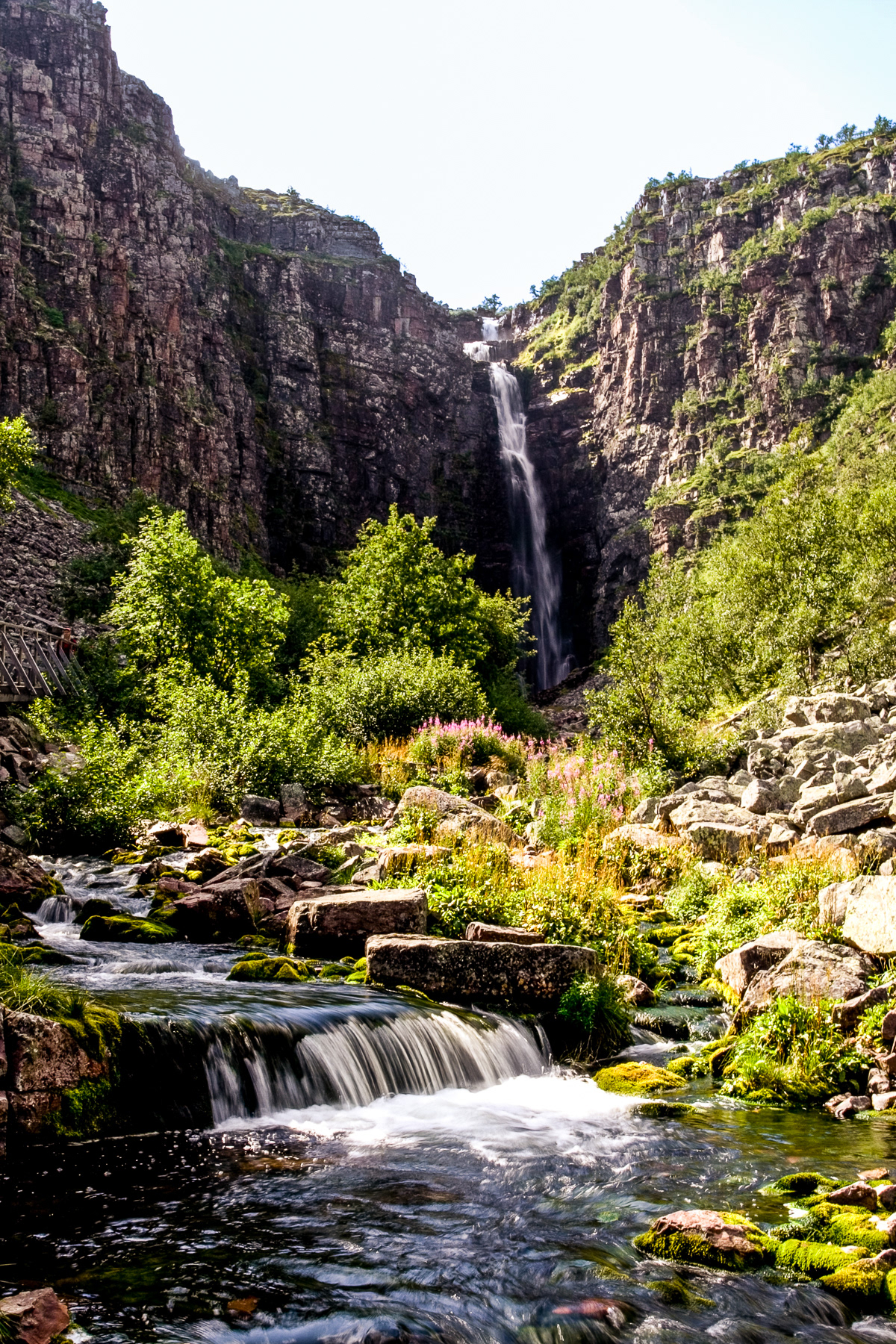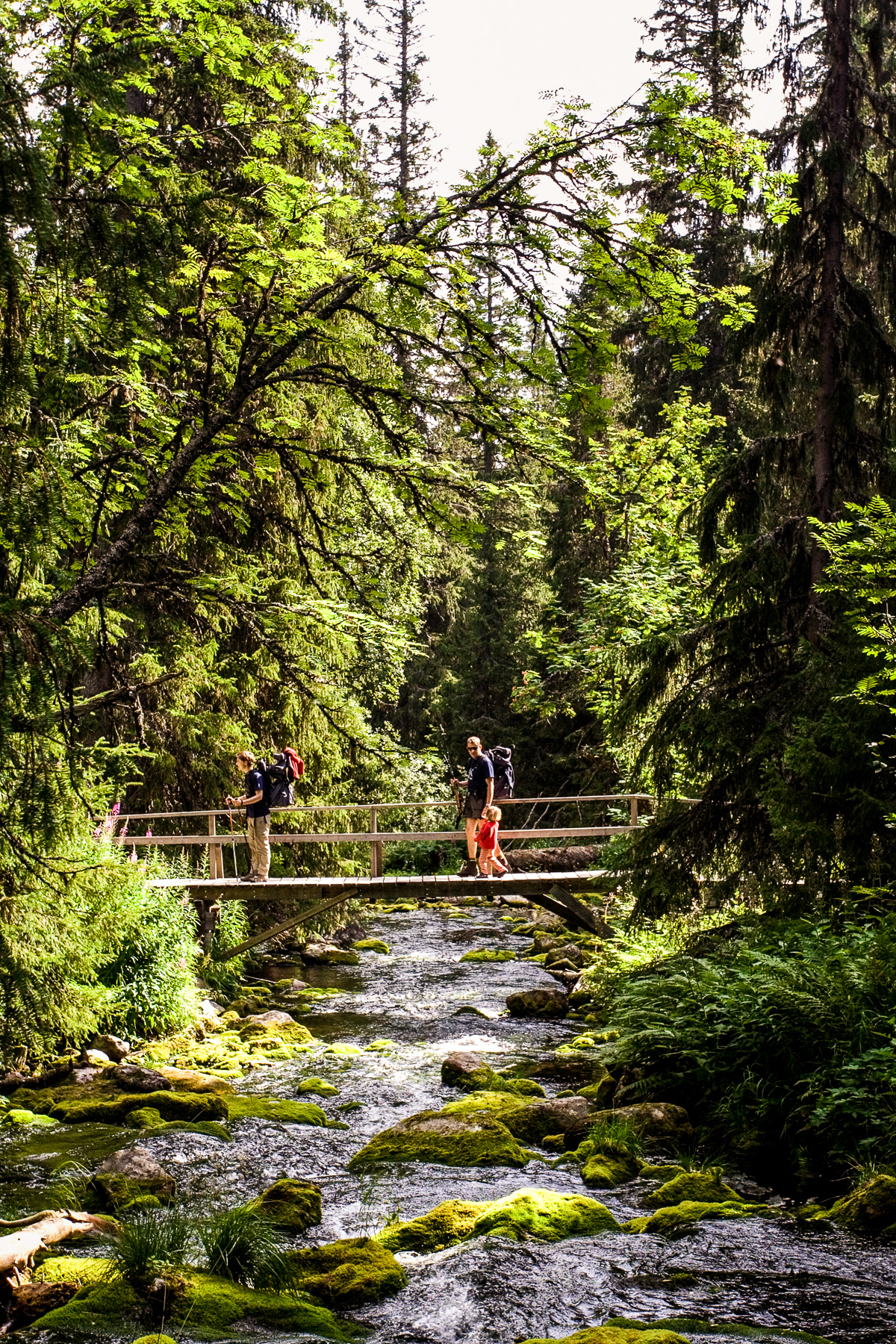The world's biggest Dala horse, symbol of the region, stands in Avesta. Made out of concrete though, as the cracks show. It is the cover model of my travel guide book Wereldwijzer Zweden, published in 2008 in the Netherlands and Belgium.

In the lands of famous painters Carl Larson and Anders Zorn, near Falun.
The former copper mine of Falun, UNESCO World Heritage with most of the town. Legend has it a goat found the metal by digging in the ground. Even though the mine is no longer active, the rest product of mining copper is used to make the typical red-brown paint protecting many wooden buildings in Sweden against the elements. Photo from 2012.
Spelmän ("Play men") are traditional musicians who traditionally provide live music to ceremonies and dance events in rural societies. They are common sights on weddings, such as this one in 2014, and festivals in Dalarna and other Swedish regions.
July flower fields in Tällberg, on the eastern bank of the big lake Siljan. Photo from 2015.
Älvdalen is often wrongly translated as the Valley of the Elves, but it sounds wonderful, and so is its landscape nearby.

The Njupeskär is with 93 metres Sweden's highest waterfall ...

... and is located in Fulufjället National Park, which feels very much like Narnia.
At the highest public road of Sweden lies the Nipfjället mountain. Close to the border with Norway, one has great views over the landscape from 1100 metres high. Proud to have captures my parents making it to the first top here.